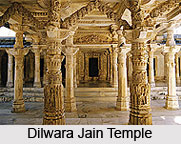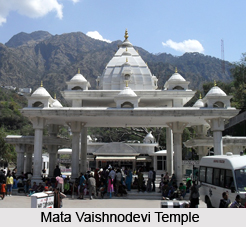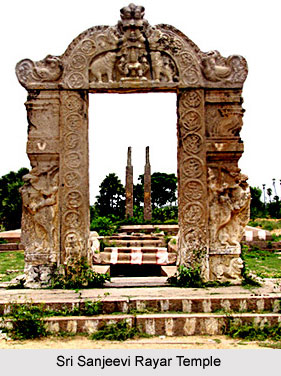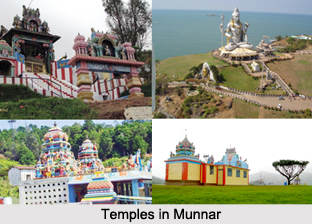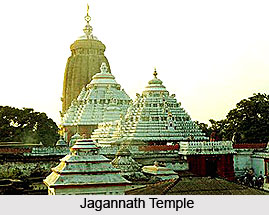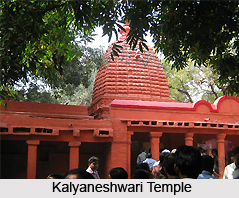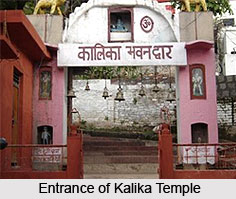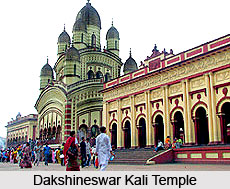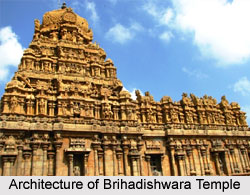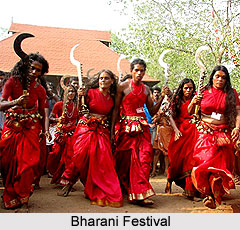 Bhagawati Temple is an ancient temple located in Kodungallur in Kerala. It is also referred to as the abode of Kannagi. Kannagi is believed to be an incarnation of Goddess Kali. The temple was thus erected in her memory in Kodungallur. The temple celebrates many festivals on a grand scale. Among them Talappoli and Bharani are the two main festivals conducted in the temple of Kannaki every year. The former is a colourful pageant full of merriment, with mainly the local people participating while the Bharani festival is purely devotional and ritualistic, yet attracting pilgrims from all over Kerala.
Bhagawati Temple is an ancient temple located in Kodungallur in Kerala. It is also referred to as the abode of Kannagi. Kannagi is believed to be an incarnation of Goddess Kali. The temple was thus erected in her memory in Kodungallur. The temple celebrates many festivals on a grand scale. Among them Talappoli and Bharani are the two main festivals conducted in the temple of Kannaki every year. The former is a colourful pageant full of merriment, with mainly the local people participating while the Bharani festival is purely devotional and ritualistic, yet attracting pilgrims from all over Kerala.
Talappoli festival starts on Makar Sankranti i.e. the first of Makaram i.e. on December-January and lasts for four days. It is a harvest festival coinciding with Pongal celebrated in Tamil Nadu and certain parts of South India. On the day previous of Makar Sankranti in Kerala and in other places rubbish and other unwanted materials are collected and burnt. Houses and courtyards are cleaned. The temple premises are decorated and a large fair set up. A part of the rice from the freshly harvested paddy is set apart as offering to the Goddess. On Makar Sankranti the people belonging to the community of Kudumis (Konkani-speaking people, their main occupation being making of pappads) from and around Kodungallur gather here in large numbers with their offerings. A big fireworks display takes place which mark the inauguration of the festival. From the next day onwards, for four successive days, there are elephant processions both in the morning and in the evening. The procession starts from a small shrine dedicated to Kurumbayamma supposed to be the original seat of Kodungallur Devi about half a kilometre away. A feature of the procession is an array of the gaily dressed women carrying talam (trays) with coconuts and rice accompanying it. Another is the central elephant carrying a kolam that is a flat plate with a small umbrella instead of thidampu, a miniature of the idol used in profession in other temples. As it reaches the eastern side of the temple reception is held to the Goddess by the Chieftain of Kodungallur and priests of the temple with the cries of `Amma` rending the air.
The Bharani festival is celebrated on the Bharani asterism of the month of Kumbham (February-March) when the temple flag is hoisted. It lasts for seven days after the next Bharani in Meenam (March-April). The temple is widely known more for this festival. It is the one temple in Kerala where non-caste Hindus was allowed entry during the festival long before the Temple Entry legislation became effective in Kerala. The festival begins with the symbolic ceremonial kavu teendal or polluting the temple by a goldsmith of polluting caste going round the temple three times ringing a bell at about 7 in the morning. After a few minutes the eldest family member of the Pilappilly House attached to the temple announces that the temple has been swept clean. Thereafter the Nambudiri priest enters the sanctum and conducts the usual services.
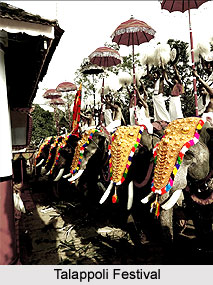 The flow of pilgrims from other parts of Kerala commences some days before the Bharani day in Meenam. The sacrifice of cocks is held on Avittam or Chatayam day i.e. six or seven days before Bharani. From these days the temple is regarded as polluted. The heads of cocks are severed by a sharp knife and blood spilt on the two stones in the courtyard. It is on account of this ceremony (which is now stopped) the Bharani festival came to be known as the Cock Festival.
The flow of pilgrims from other parts of Kerala commences some days before the Bharani day in Meenam. The sacrifice of cocks is held on Avittam or Chatayam day i.e. six or seven days before Bharani. From these days the temple is regarded as polluted. The heads of cocks are severed by a sharp knife and blood spilt on the two stones in the courtyard. It is on account of this ceremony (which is now stopped) the Bharani festival came to be known as the Cock Festival.
The privilege of commencing the Cock Festival traditionally belonged to a Nair from Kodungallur Bhagawati Veedu (House). On Aswati day previous to Bharani offerings are made to the Goddess. Small packages of turmeric, pepper and other articles with some coins, coconut and a live cock are given to the goddess. On this day the Atikal, a non-Brahmin priest enters the sanctum and performs the service of trichchandanapoti chartal or smearing of the idol with holy sandal powder. This is done with the door of the temple kept closed. Later they are opened for darshan. After this service the Valia or Senior Raja of Kodungallur stands on the platform of the pipal tree in front of the eastern portico and spreads a green umbrella. On Karthika day, i.e. the day after Bharani, the premises of the temple are swept clean. The Nambudiri priests enter the temple and start the usual services after performing purificatory rites. Thousands of pilgrims who gather for the festival disperse after taking prasad like sandal paste mixed with turmeric, and chantu, black paint of burnt rice.
The time for the celebration of the Bharani festival is noteworthy. The months of March, April and May are the hottest months in Kerala which are also crucial for agriculturists. The fields are ploughed several times after the preceding crops are cut in December-January. The farmers look skywards for merciful rains. The Bharani festival which takes place now is obviously to please the Gods for good rains and bountiful crops.












